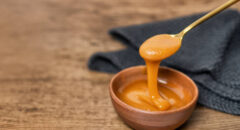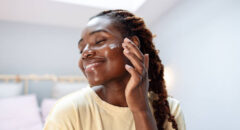
Summer’s warmth can be a double-edged sword for those living with Hidradenitis Suppurativa (HS). While the season invites outdoor activities, the accompanying heat and humidity often exacerbate HS symptoms. This guide offers practical strategies to navigate the challenges of summer, aiming to keep flare-ups at bay and enhance comfort during the hottest months.
Understanding Summer Triggers for HS Flares
Summer can be a particularly uncomfortable time for those living with HS. The combination of heat, humidity, and increased perspiration creates a perfect storm for flare-ups. As body temperature rises, sweat becomes trapped in skin folds—under the arms, between the thighs, under the breasts, or in the groin area. This moist environment, when combined with friction and bacterial growth, causes the skin to become irritated, inflamed, and susceptible to the painful boils, nodules, and abscesses that define HS.
Additionally, summer clothing trends like tighter outfits, synthetic fabrics, and frequent shaving can further aggravate these sensitive areas. Even outdoor activities—like hiking, gardening, or sports—can lead to excess moisture and chafing, triggering flare-ups that last for days or even weeks.
Learning to identify and control environmental triggers—such as time of day, clothing choices, and stress levels—can help individuals better manage summer flares and reduce their severity.
Cooling Body Care Products to Keep on Hand
A targeted skincare routine can provide immense relief during hot weather. The goal is to minimize bacteria, reduce friction, calm inflammation, and keep the skin cool:
- Antibacterial washes: Products containing benzoyl peroxide or chlorhexidine gluconate (available over-the-counter or by prescription) can reduce surface bacteria and minimize the risk of infection in flare-prone areas. These should be used once or twice daily, especially after sweating.
- Cooling sprays: Aloe-based sprays or mists with ingredients like menthol or witch hazel can provide a soothing, refreshing effect. These are particularly helpful post-exercise or after time outdoors.
- Anti-inflammatory creams: Topicals containing resorcinol, zinc, or niacinamide have been shown to help reduce inflammation, redness, and tenderness during a flare. Resorcinol, in particular, helps with keratin buildup and assists in the breakdown of blocked hair follicles, offering both relief and prevention.
- Powders or barrier creams: Non-talc powders or zinc-based barrier creams can be applied to high-friction areas to absorb excess moisture and prevent skin-on-skin irritation.
Always test new products on a small patch of skin to ensure they don’t trigger additional irritation.
RELATED: HS? Here’s How to Look & Feel Your Best No Matter What

Choosing Breathable Clothing to Protect Your Skin
What you wear in the summer matters. Certain fabrics and fits can either aggravate or soothe HS-affected areas:
- Fabrics: Natural materials like cotton, bamboo, linen, and moisture-wicking athletic fabrics help pull sweat away from the skin and allow it to breathe. Avoid polyester or synthetic blends, which trap heat and moisture.
- Fit: Clothes should be loose-fitting and soft to avoid creating pressure or friction on already sensitive skin. Flowy shorts, dresses, and oversized t-shirts are better than tight jeans or fitted undergarments.
- Specialized clothing: Brands like Hidrawear, Silverts, and Tommy Adaptive now offer dermatology-approved wearables made specifically for chronic skin conditions. These garments feature antimicrobial fabrics, built-in dressings for open wounds, and easy-access designs that minimize chafing.
Investing in the right clothing can make outdoor summer events feel more manageable and even enjoyable for those with HS.
Engaging in Low-Impact Workouts
While it’s true that intense sweating and friction can trigger flares, not all movement is bad for HS. In fact, regular low-impact activity can reduce inflammation, improve circulation, and support mental health, which are all essential for holistic HS management:
- Swimming: An excellent, non-weight-bearing exercise that keeps the body cool while working multiple muscle groups. Just remember to rinse off chlorinated water immediately after swimming and moisturize afterward.
- Yoga & stretching: These gentle movements support flexibility, stress relief, and circulation, without overexertion. Choose breathable yoga wear and avoid poses that compress affected areas during a flare.
- Walking: Whether it’s a slow morning stroll or an evening loop around the neighborhood, walking helps improve cardiovascular health and reduce systemic inflammation without the sweat-dripping intensity of other cardio exercises.
Always shower or wipe down immediately after working out and apply a soothing, antibacterial product if needed. This helps prevent clogged pores and irritation post-exercise.

Treating Dark Marks and Scarring with Care
HS often leaves behind hyperpigmentation, dark spots, and thickened scar tissue that can affect both physical and emotional well-being. While there’s no instant fix, consistent care can improve appearance over time:
- Topical silicone gels or sheets: These can reduce raised scarring and are often used after surgery or injury. They work best on newer scars and should be used daily for several months for visible improvement.
- Brightening agents: Ingredients like niacinamide, vitamin C, kojic acid, and azelaic acid can gently fade dark spots left after flare-ups. These should be applied in the evening and used consistently, with sunscreen during the day to prevent darkening.
- Laser therapy: Dermatological treatments such as fractional CO₂ laser or intense pulsed light (IPL) can help reduce scarring and improve skin texture. These may require multiple sessions and can be costly, but are effective for severe scarring.
- Microneedling and PRP: These in-office procedures help stimulate collagen production, making skin smoother and more even over time.
Speak with a dermatologist who understands HS and skin of color to get the best treatment for your specific skin tone and condition.
RELATED: 5 Skincare Products to Avoid With HS
Maintaining Confidence When HS is Visible
The visibility of HS symptoms—such as open wounds, bandages, or scars—can deeply impact self-esteem. Many people feel pressure to hide their bodies during summer months, especially in a culture that equates beauty with smooth, unblemished skin.
Here are a few ways to protect and boost your confidence:
- Support groups: Connecting with others living with HS through platforms like Facebook groups, Reddit forums, or HS-specific organizations provides solidarity and resources. You’re not alone.
- Mental health therapy: Working with a licensed therapist, especially one familiar with chronic illness or body image, can help process feelings of shame or embarrassment and build healthier self-narratives.
- Affirming activities: Do things that make you feel powerful—whether that’s wearing a bold lip color, taking selfies, journaling your wins, or sharing your HS journey with others. Your story matters.
- Adaptive fashion: Swimsuits with mesh panels, flowy cover-ups, and stylish loosewear can help you feel protected and fashionable at the same time.
Confidence grows through community, compassion, and reclaiming your own voice and body.
Consulting a Dermatologist for Long-Term Management
HS requires more than occasional flare management—it demands a long-term, individualized care plan. Seeing a board-certified dermatologist, preferably one experienced in HS, is a game-changer.
- Treatment plans: A doctor may prescribe oral medications like antibiotics, hormonal therapies, retinoids, or biologic drugs like adalimumab (Humira) for moderate-to-severe HS. Surgical options—such as deroofing or wide excision—may also be considered for persistent tunnels and lesions.
- Regular follow-ups: Chronic conditions change with time, and so should your treatment. Reassessment every three to six months can help tailor your care plan to new symptoms, life changes, or flare triggers.
- Referrals: A holistic team might include a gynecologist, endocrinologist, or nutritionist—especially if your HS is tied to hormonal shifts or metabolic concerns.
Come prepared to your appointments with a symptom journal, photos of flares, and questions about treatment goals.
Navigating the summer months with HS requires a proactive approach to minimize flare-ups and maintain quality of life. By understanding triggers, utilizing appropriate skincare and clothing, engaging in suitable physical activities, and seeking professional guidance, individuals with HS can better manage their condition during the heat of summer.









